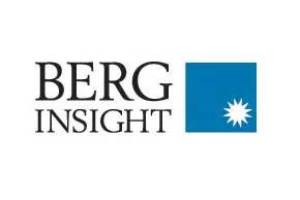The number of remotely monitored patients worldwide grew 44% in 2016 to 7.1 million, says Berg Insight

Anders Frick, senior analyst at Berg Insight
M2M/IoT market research provider, Berg Insight has released new findings about the mobile healthcare (mHealth) market. The number of remotely monitored patients grew by 44% to 7.1 million in 2016 as the market entered a growth phase fuelled by rising market acceptance in several key verticals.
This number includes all patients enrolled in mHealth care programmes in which connected medical devices are used as a part of the care regimen.
Connected medical devices used for various forms of personal health tracking are not included in this figure. Berg Insight estimates that the number of remotely monitored patients will grow at a compound annual growth rate (CAGR) of 47.9% to reach 50.2 million by 2021.
The two main applications are monitoring of patients with sleep therapy devices and monitoring of patients with implantable cardiac rhythm management (CRM) devices. These two verticals accounted for 80% of all connected home medical monitoring systems in 2016.
“The number of remotely monitored sleep therapy patients grew by 70% in 2016, mainly driven by Resmed that has made connected healthcare a cornerstone of its strategy” says Anders Frick, senior analyst at Berg Insight. Other leading vendors in this segment are Philips Respironics and SRETT. The CRM market is led by companies such as Medtronic, Boston Scientific and St. Jude Medical (now Abbott) that included connectivity in CRM solutions more than a decade ago.
 Telehealth is the third largest segment with 0.50 million connections at the end of the year. Leading telehealth hub vendors include Tunstall Healthcare, Honeywell, Cardiocom, Philips and Qualcomm Life. All other device categories – including ECG, glucose level, medication adherence and others – stood for less than one million connections together.
Telehealth is the third largest segment with 0.50 million connections at the end of the year. Leading telehealth hub vendors include Tunstall Healthcare, Honeywell, Cardiocom, Philips and Qualcomm Life. All other device categories – including ECG, glucose level, medication adherence and others – stood for less than one million connections together.
Cellular connectivity has already replaced PSTN and LAN as the de-facto standard communication technology for most types of connected home medical monitoring devices. The number of mHealth devices with integrated cellular connectivity increased from 3.0 million in 2015 to 4.9 million in 2016.
The use of BYOD connectivity will increase the most during the next five years, with a forecasted CAGR of 109%. BYOD involves low costs, but cannot be used to reliably connect every patient. The technology will be most useful for patient-centric engagement programs in therapeutic areas such as diabetes and asthma that have younger patient demographics compared to many other chronic diseases.
In fact, many of these patients will prefer to use their own smartphone as the interface instead of carrying around a dedicated device for remote monitoring.
Click here to download the report brochure: mHealth and Home Monitoring
Comment on this article below or via Twitter @IoTGN
